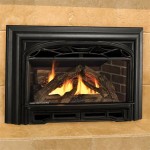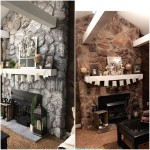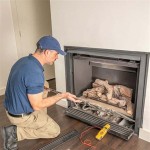Stacked Fireplace Stone: A Comprehensive Guide to Design, Installation, and Maintenance
Stacked fireplace stone, also known as dry-stacked stone or ledge stone, is a popular architectural feature used to enhance the aesthetic appeal of fireplaces. It consists of individual stones, typically rectangular or square, arranged in a layered fashion to create a textured and visually appealing surface. This technique offers a more rustic and natural look compared to traditional brick or smooth stone fireplaces. Understanding the nuances of stacked fireplace stone, from design considerations to proper installation and long-term maintenance, is crucial for achieving a successful and enduring result.
This article provides a comprehensive overview of stacked fireplace stone, covering various aspects related to its design, installation, and ongoing care. It aims to provide homeowners, contractors, and design professionals with the knowledge necessary to make informed decisions regarding the incorporation of stacked stone into fireplace projects.
Design Considerations for Stacked Fireplace Stone
Selecting the appropriate stacked stone for a fireplace involves careful consideration of several design elements. These elements collectively contribute to the overall aesthetic and ensure the fireplace complements the surrounding environment.
Stone Type: The type of stone used significantly impacts the fireplace's appearance. Common options include natural stone such as slate, quartzite, limestone, and sandstone, as well as manufactured stone veneer. Natural stone offers unique variations in color and texture, providing a truly one-of-a-kind look. However, it can be more expensive and heavier than manufactured stone. Manufactured stone veneer, on the other hand, is lighter, more consistent in appearance, and often more cost-effective. It's also available in a wider range of colors and styles, allowing for greater design flexibility.
Color Palette: Choosing the right color palette is essential for achieving the desired aesthetic. The color of the stacked stone should complement the existing interior décor, including wall colors, flooring, and furniture. Neutral tones such as grays, browns, and creams are versatile and can blend seamlessly with various design styles. For a bolder statement, consider stones with more vibrant colors or contrasting hues. The color of the grout, if any, should also be taken into account as it can significantly affect the overall appearance of the finished fireplace.
Stone Size and Shape: The size and shape of the individual stones influence the texture and visual impact of the stacked stone fireplace. Larger stones create a more dramatic and imposing look, while smaller stones offer a more subtle and refined appearance. The shape of the stones can also vary, ranging from rectangular and square to irregular and more natural forms. Mixing different sizes and shapes can add visual interest and create a more dynamic texture. The proportions of the stone should be carefully considered in relation to the size of the fireplace and the overall room.
Fireplace Style: The style of the stacked stone should align with the overall architectural style of the home. For traditional homes, natural stone with a rustic texture can enhance the charm and character. For more modern homes, manufactured stone veneer with clean lines and a contemporary color palette may be more appropriate. Consider the fireplace's role in the room – is it a focal point, or a subtle accent? The chosen style should reflect this role.
Grout vs. Dry-Stack: A critical design choice is whether to use grout between the stones. Dry-stacking involves fitting the stones together tightly without grout, creating a more natural and seamless look. Grouting, on the other hand, fills the gaps between the stones, providing added stability and a more finished appearance. The choice depends on the desired aesthetic and the type of stone used. Some stones are better suited for dry-stacking due to their natural shapes and interlocking properties.
Installation Process for Stacked Fireplace Stone
Proper installation is paramount for ensuring the longevity and structural integrity of a stacked fireplace stone façade. The installation process typically involves several key steps, from surface preparation to the final sealing.
Surface Preparation: The first step is to prepare the surface to which the stone will be adhered. This usually involves cleaning the existing surface to remove any dirt, dust, or debris. If the surface is not already concrete or masonry, a cement backer board should be installed to provide a stable and moisture-resistant substrate. The backer board should be securely fastened to the framing studs using appropriate screws. Proper preparation is vital for achieving a strong and lasting bond between the stone and the underlying surface.
Mortar Application: A high-quality mortar specifically designed for stone veneer is essential. The mortar should be mixed according to the manufacturer's instructions to achieve the correct consistency. Using a notched trowel, apply a layer of mortar to the back of each stone, ensuring complete coverage. This ensures a strong bond and prevents moisture from seeping behind the stones. The mortar should be applied in a consistent thickness to ensure uniform adhesion.
Stone Placement: Carefully place each stone onto the prepared surface, pressing firmly to ensure the mortar adheres properly. Start at the bottom and work upwards, maintaining consistent spacing between the stones if grouting is planned. Follow the chosen design pattern, ensuring the stones are aligned and level. Use shims or spacers if necessary to maintain consistent spacing. Check the level and plumb of the wall frequently to ensure the installation remains straight and true.
Cutting and Shaping: Cutting stones may be necessary to fit around corners, edges, or other obstructions. Use a wet saw with a diamond blade to make clean and precise cuts. Safety glasses and ear protection should be worn during this process. Carefully measure and mark the stones before cutting to ensure accurate results. The cut edges can be smoothed with a grinding stone for a more finished appearance.
Grouting (Optional): If grouting is desired, allow the mortar to cure for the recommended time (typically 24-48 hours). Use a grout bag or a margin trowel to apply grout into the spaces between the stones. Ensure the grout fills the gaps completely and avoid getting grout on the face of the stones. After the grout has partially dried, use a damp sponge to carefully wipe away any excess grout from the stone surfaces. The grout joints can be tooled to create a specific profile, such as concave or flush.
Sealing (Optional): Sealing the stacked stone can provide added protection against moisture, stains, and weathering. A high-quality stone sealant should be applied according to the manufacturer's instructions. Sealing is particularly important for natural stone, which can be more porous and susceptible to staining. Ensure the sealant is compatible with the type of stone used and test it in an inconspicuous area before applying it to the entire surface.
Maintenance and Care of Stacked Fireplace Stone
Proper maintenance is essential for preserving the beauty and longevity of a stacked fireplace stone façade. Regular cleaning and preventative measures can help prevent damage and ensure the fireplace remains an attractive focal point.
Regular Cleaning: Dust and debris can accumulate on the surface of the stacked stone, diminishing its appearance. Regularly dust the stone with a soft brush or a vacuum cleaner with a brush attachment. For more stubborn dirt or stains, use a mild soap and water solution and a soft sponge or cloth. Avoid using harsh chemicals or abrasive cleaners, as these can damage the stone. Rinse the stone thoroughly with clean water after cleaning.
Stain Removal: Stains can occur from various sources, such as soot, grease, or watermarks. The best approach is to address stains as soon as they occur. For soot stains, use a dry sponge or cloth to gently wipe away the soot. For grease stains, use a degreasing cleaner specifically designed for stone. For watermarks, try cleaning the area with a mild soap and water solution. In some cases, professional stone cleaning services may be required to remove particularly stubborn stains.
Crack and Chip Repair: Inspect the stacked stone regularly for cracks or chips. Minor cracks and chips can often be repaired using a stone repair compound that matches the color of the stone. Apply the repair compound according to the manufacturer's instructions, ensuring the area is clean and dry before application. For larger cracks or chips, professional stone repair services may be necessary to ensure a durable and aesthetically pleasing repair.
Moisture Control: Excessive moisture can damage the stacked stone and cause it to deteriorate. Ensure proper drainage around the fireplace to prevent water from pooling near the base. Repair any leaks or water damage promptly to prevent further deterioration. Sealing the stone can also help protect it from moisture damage. Proper ventilation in the area surrounding the fireplace can also help prevent moisture buildup.
Inspection and Preventative Maintenance: Periodically inspect the stacked stone for signs of damage, such as loose stones, crumbling mortar, or water stains. Address any issues promptly to prevent them from escalating into more significant problems. Consider having the fireplace professionally inspected every few years to ensure it is in good condition and identify any potential issues before they become serious. Replacing damaged mortar joints, resealing the stone, and ensuring proper ventilation are all important preventative maintenance measures.

12 Stacked Stone Fireplace Ideas For Optimal Coziness

12 Stacked Stone Fireplace Ideas For Optimal Coziness
.jpg?strip=all)
Tips And Tools For Professional Stacked Stone Fireplaces

5 Stacked Stone Surrounds Travertine Quartzite Or Marble

Natural Stacked Stone Veneer Fireplace Ideas

Is A Cozy Stacked Stone Fireplace Your Next Dream Project

Pin On Woodworking

Tips And Tools For Professional Stacked Stone Fireplaces

Stacked Stone Fireplace 10 Luxurious Design Ideas Stoneyard

Is A Cozy Stacked Stone Fireplace Your Next Dream Project
Related Posts








